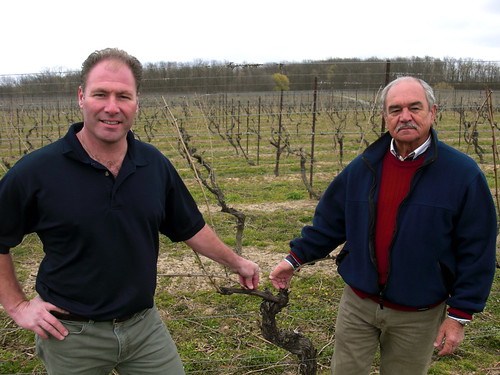
It’s not always the wine that excites me, it’s the journey it takes to get in my glass from vine, to bud, to flower to grape to harvest, to crusher, to fermentation, to barrel, to bottle and finally in my mouth.
We take the journey lightly, letting Mother Nature, viticulturists and winemakers do all the work before we show any interest in the life of a grape. After all, it’s not one grape we’re interested in, it’s a whole bunch of them.
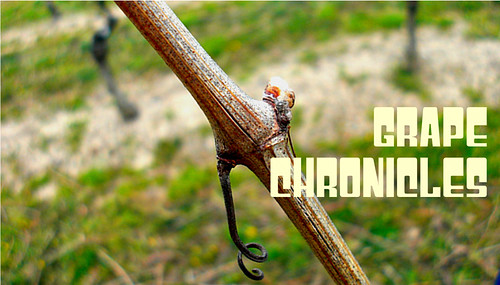 I have always wanted to patiently watch a single bud as it grows into a grape and the various stages it takes before it’s gone in a gulp. I know, I know, how geeky is that, right? Well, it’s very geeky, I admit it. And frankly, I don’t have time to sit and watch a grape grow.
I have always wanted to patiently watch a single bud as it grows into a grape and the various stages it takes before it’s gone in a gulp. I know, I know, how geeky is that, right? Well, it’s very geeky, I admit it. And frankly, I don’t have time to sit and watch a grape grow.
But I do have friends. Friends who know how this stuff works. They’ve agreed to be co-conspirators in helping to explain the journey of vine to grape.
For this adventure, something called Grape Chronicles, I chose one of Niagara’s iconic vineyards to find my little grape we’ll call Grape X as we follow it through its life cycle.
It’s here in the St. Urban Vineyard of Vineland Estate, the famed Riesling mecca that is presided over by winemaker Brian Schmidt and viticulturist Roman Prydatkewycz (seen in very top photo from left to right), that we have chosen a vine that will yield, in due time, our Grape X.

For now, we can only show you the five shoots that have been left on the vine since pruning took place in February. The vines are in a dormant state from the moment the leaves drop in late fall until early spring. The pruners leave extra shoots on the vines and the health of the buds, usually 10-12 buds per shoot, will determine which two shoots will be left to tie off on the trellis system. The Pendlebogen trellising system is used in the St. Urban Vineyard, with shoots tied horizontally (Vineland is in the process of transitioning to the VSP – vertical shoot position – trellis system). Spacing is 4.5 feet between vines and nine feet between rows.The Pendlebogen trellis system helps with arching of canes and creates better vertical distribution of fruit on the trellis. There are also relatively fewer ties per vine.
Prydatkewycz says the 2012 vintage is about two weeks ahead of normal and nearly four weeks ahead of the 2011 vintage. Buds have started appearing on the vines but bud break is still a couple of weeks away. The most important factor determining bud break, Prydatkewycz says, is the ground temperature which needs to warm up to about 15C. “Everything depends on the root system,” he says.
The vine we have chosen to follow for this project is in the first row of Field D, the 10th post (from Vineland’s restaurant) and the second vine. It is marked with a pink ribbon. Say hi if you are visiting Vineland Estate. It enjoys all songs by Neil Young if you feel like singing.
We will attempt to follow Grape X from bud, to bud break, to flowering, to grape formation, maturity, picking and hopefully through the winery process and (maybe, with some luck) to bottle and, ultimately, down the hatch. My hatch.
Prydatkewycz will offer his knowledge from the vines’ perspective while Schmidt will chime in as the grape starts maturing this summer and fall.
 About Prydatkewycz, Vineland Estate Viticulurist
About Prydatkewycz, Vineland Estate Viticulurist
Born in the Ukraine, Prydatkewycz’s family immigrated to Brazil when he was a young boy. As a teenager Prydatkewycz’s family moved to Hamilton. After many years of working in the food processing industry, a friend suggested he invest in some land on the Niagara Escarpment. After much careful thought, he did just that and began his second career as a winegrower. Prydatkewycz and wife Sophie owned and operated their 26 acre vineyard on the Beamsville Bench, a preferred site for growing grapes nestled against the Niagara Escarpment, known as Rosomel Vineyard. Prydatkewycz’s ability to recognize the varieties that are best suited for this area has made Rosomel Vineyard a bench mark for quality of grapes we expect.
About Brian Schmidt, vice-president and winemaker, Vineland Estate
Schmidt was born in Kelowna, British Columbia, and was raised on a vineyard that had been in the family for three generations. The Schmidt family was one of the founding families of the Okanagan wine industry and this was the foundation of Schmidt’s interest in winemaking.
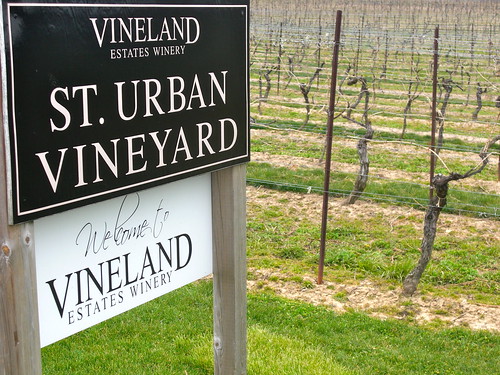 Schmidt has travelled extensively throughout Europe studying winemaking and the winemaking process. It is this experience that has resulted in the creation of a winemaking style that has become a Vineland Estates Winery signature.
Schmidt has travelled extensively throughout Europe studying winemaking and the winemaking process. It is this experience that has resulted in the creation of a winemaking style that has become a Vineland Estates Winery signature.
In 1991, Schmidt travelled to Ontario to train with his brother Allan, who was the original winemaker at Vineland Estates. Schmidt took over this position at the winery in 1994 and ever since his commitment to producing quality products has been evident in the cellar, where his self-described winemaking style is “minimalist by nature.”
The result is the consistent production of award winning wines that have garnered national and international recognition. One notable achievement was the awarding of the Vinitaly Grand Special trophy as the highest scoring winery in a field of over three thousand wines. Schmidt has been instrumental in building a reputation for the winery as a producer of Ontario’s best Rieslings, in focusing the portfolio of wines on additional signature varietals such as Cabernet Franc and Sauvignon Blanc, and in the creation of the iconic Elevation brand of wines. His continuing legacy is to build Vineland Estates’ reputation for premium wines of outstanding quality.
Schmidt showed me some upcoming wines, including the 2011 St. Urban Vineyard Riesling, over a delicious lunch at the Vineland Estates Winery Restaurant enjoyed along with Prydatkewycz.
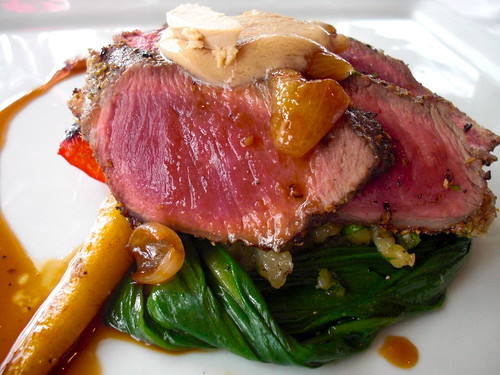
The 2011 St. Urban Riesling follows the classic style of this iconic Niagara Riesling with bright citrus and tropical fruit aromas built around a core of stony minerality. It’s an upfront style, expressive and bold, and Schmidt has decided to release this wine ahead of the 2010 St. Urban. It will be a part of the Vintages Essential release in September and Schmidt will release it at the winery after that.
He also pulled out a 2011 Pinot Meunier, a grape Schmidt is pioneering in Niagara, and it was perfect with the lamb loin, foie gras and sweet breads.
We were also treated to barrel samples of the 2010 Cabernet Elevation, a mostly Cab Franc and some Cab Sauvignon blend that will knock your socks off by the time it’s bottled. Such wonderful raspberry, cherry and tobacco notes and gorgeous texture.
But, the best of the impromptu tasting was the Cabernet Franc Reserve 2010. Thick and rich, with a juicy core of wild fruits and spice. Killer wine. Killer.
Please watch this blog for updates on the Grape Chronicles.


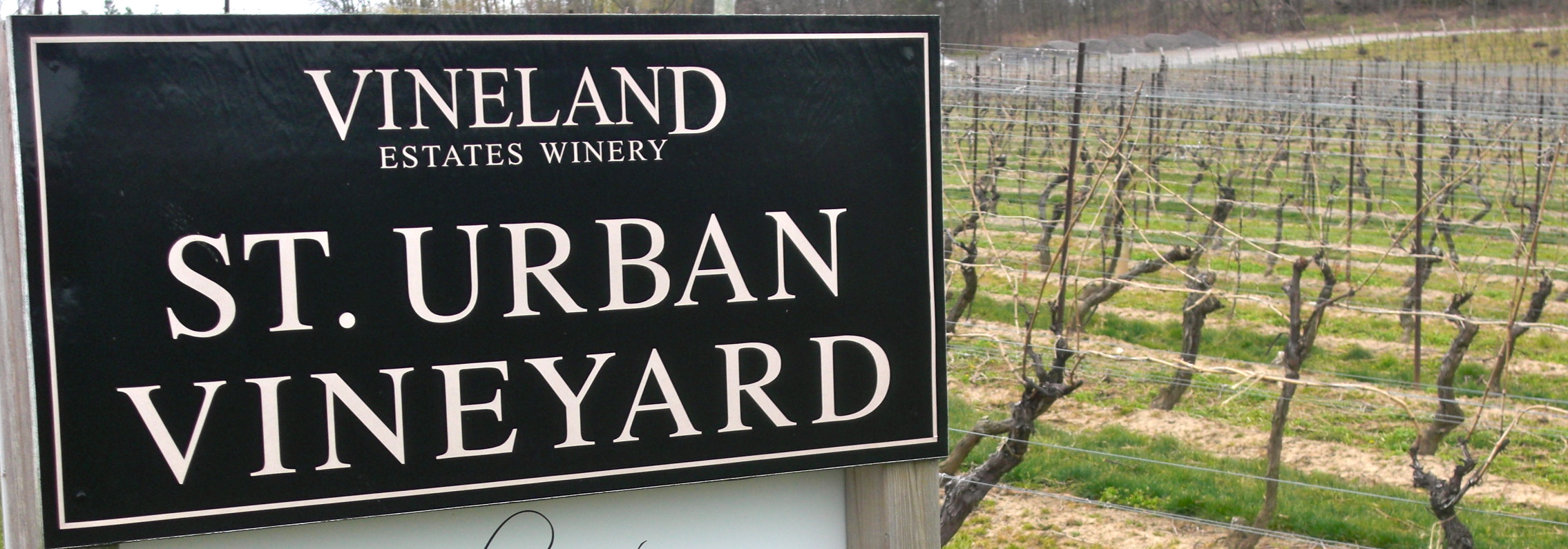



Comment here